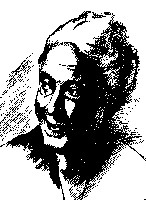Mary Church was born in Memphis, Tennessee, on 23rd September, 1863. Both her parents, Robert Church and Louisa Ayers, were both former slaves. Robert was the son of his white master, Charles Church.
During the Memphis race riots in 1866 Mary’s father was shot in the head and left for dead. He survived the attack and eventually became a successful businessman. He speculated in the property market and was considered to be the wealthiest black man in the South.
Mary was an outstanding student and after graduating from Oberlin College, Ohio, in 1884, she taught at a black secondary school in Washington and at Wilberforce College in Ohio. Through her father, Mary met Frederick Douglass and Booker T. Washington. She was especially close to Douglass and worked with him on several civil rights campaigns.
After a two year travelling and studying in France, Germany, Switzerland, Italy and England (1888-1890), Mary returned to the United States where she married Robert Heberton Terrell, a lawyer who was later to become the first black municipal court judge in Washington.
In 1892 Church’s friend, Tom Moss, a grocer from Memphis, was lynched by a white mob. Church and Frederick Douglass had a meeting with Benjamin Harrison concerning this case but the president was unwilling to make a public statement condemning lynching.
Church was an active member of the National American Woman Suffrage Association and was particularly concerned about ensuring the organization continued to fight for black women getting the vote. With Josephine Ruffin she formed the Federation of Afro-American Women and in 1896 she became the first president of the newly formed National Association of Colored Women.
In 1904 Church was invited to speak at the Berlin International Congress of Women. She was the only black woman at the conference and determined to make a good impression she created a sensation when she gave her speech in German, French and English.
During the First World War Church and her daughter, Phillis Terrell joined Alice Paul and Lucy Burns of the Congressional Union for Women Suffrage (CUWS) in picketing the White House. She was particularly upset when in one demonstration outside of the White House, leaders of the party asked the black suffragist, Ida Wells-Barnett, not to march with other members. It was feared that identification with black civil rights would lose the support of white women in the South. Despite pressure from people like Mary White Ovington, leaders of the CUWS refused to publicly state that she endorsed black female suffrage.
In 1909 Church joined with Mary White Ovington to form the National Association for the Advancement of Coloured People (NAACP). The first meeting of the NAACP was held on 12th February, 1909. Early members included Josephine Ruffin, Jane Addams, Inez Milholland, William Du Bois, Charles Darrow, Charles Edward Russell, Lincoln Steffens, Ray Stannard Baker, and Ida Wells-Barnett.
Church wrote several books including her autobiography, A Colored Woman in a White World (1940). In the early 1950s she was involved in the struggle against segregation in public eating places in Washington. Mary Church Terrell died in Annapolis on 24th July, 1954.
